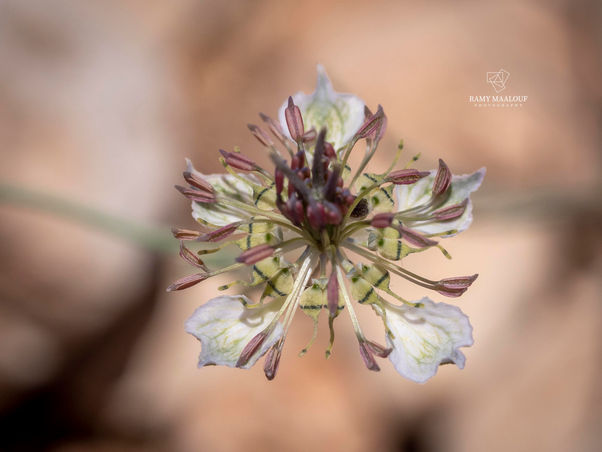Family |
Ranunculaceae
Nigella deserti
Boiss.
Nigella deserti Boiss.
(First published in Ann. Sci. Nat., Bot., sér. 2, 16: 359; 1841. Treated in Nouvelle Flore du Liban et de la Syrie, vol. 2, p. 165; 1969)
• Life-form & habit: Annual, 20–50 cm tall, glabrous or slightly pubescent, branching from the base.
• Leaves: Pinnatisect into filiform lobes, sometimes broader near the apex.
• Inflorescence & flowers: Flowers solitary, involucrate or not; sepals whitish or pale bluish, small; petals bilabiate, lower lip often prolonged into filiform appendages.
• Fruit: Follicles 5–8, concrescent in their basal half, divergent above, with long rostrate tips; dorsal surface prominently 3-nerved, often verrucose between nerves. Seeds angular, tuberculate.
• Phenology: Flowers April–June.
• Lebanese distribution: No confirmed localities; Mouterde questioned records from the Anti-Lebanon.
• Syrian distribution: Reported in the steppe and desert regions — Upper Jeziré, Hauran, Jabal Druze, Damascus basin, Deir-ez-Zor, Soukhné, Tell Hadid.
• Native range: Lebanon, Syria, Palestine, Iraq, Saudi Arabia. (POWO)
⚠️ Taxonomic note: Mouterde considered N. deserti very close to N. arvensis and sometimes treated as a variety (N. arvensis var. caudata Boiss.). The distinction lies mainly in the more divergent follicles with long beaks and the verrucose dorsal surface.




